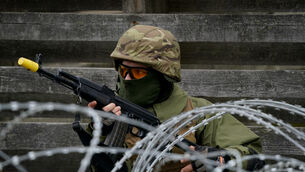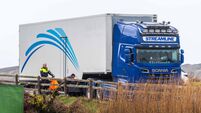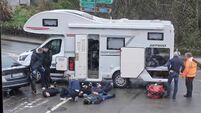155 injured in Japan earthquake
A powerful magnitude-7.0 earthquake struck off the coast of southern Japan on today, injuring at least 155 people, damaging buildings and leaving residents shaken as aftershocks continued. Authorities issued a tsunami warning that was later cancelled.
The tremor, which hit west of Kyushu Island at 10.53am (1.53am), was centred at an “extremely shallow” depth of 5.5 miles below the ocean floor, the Japanese Meteorological Agency said. Aftershocks followed – at least one a magnitude-4.2 quake.














